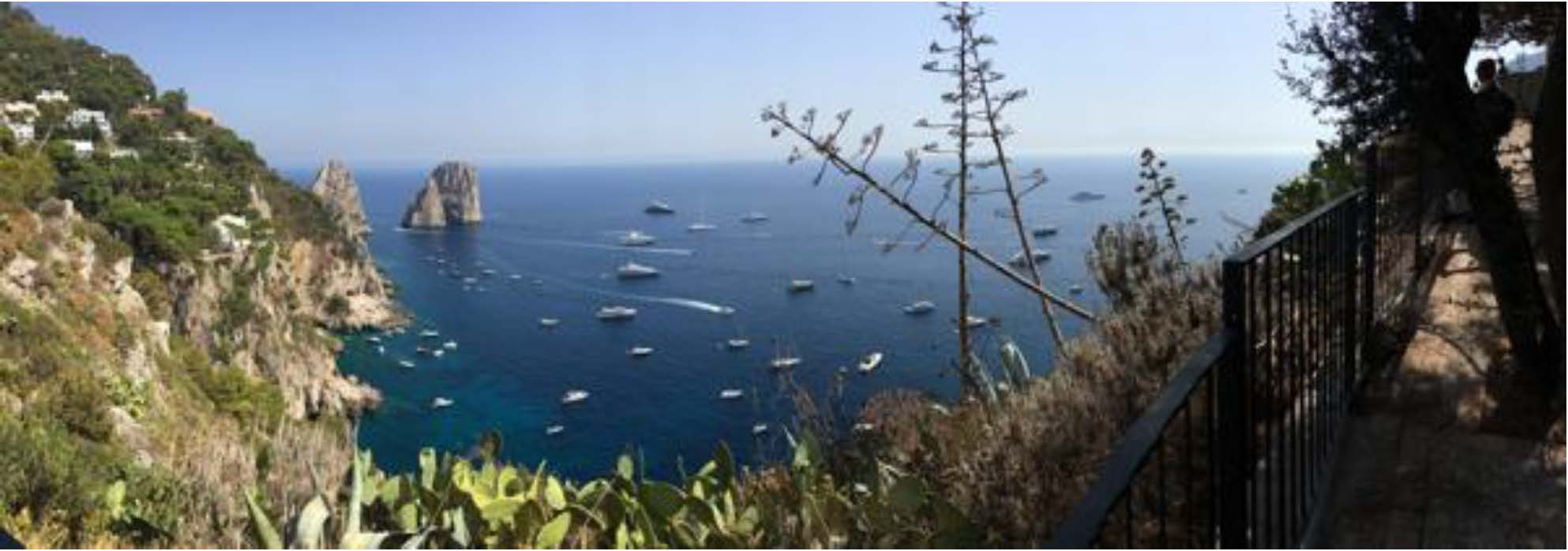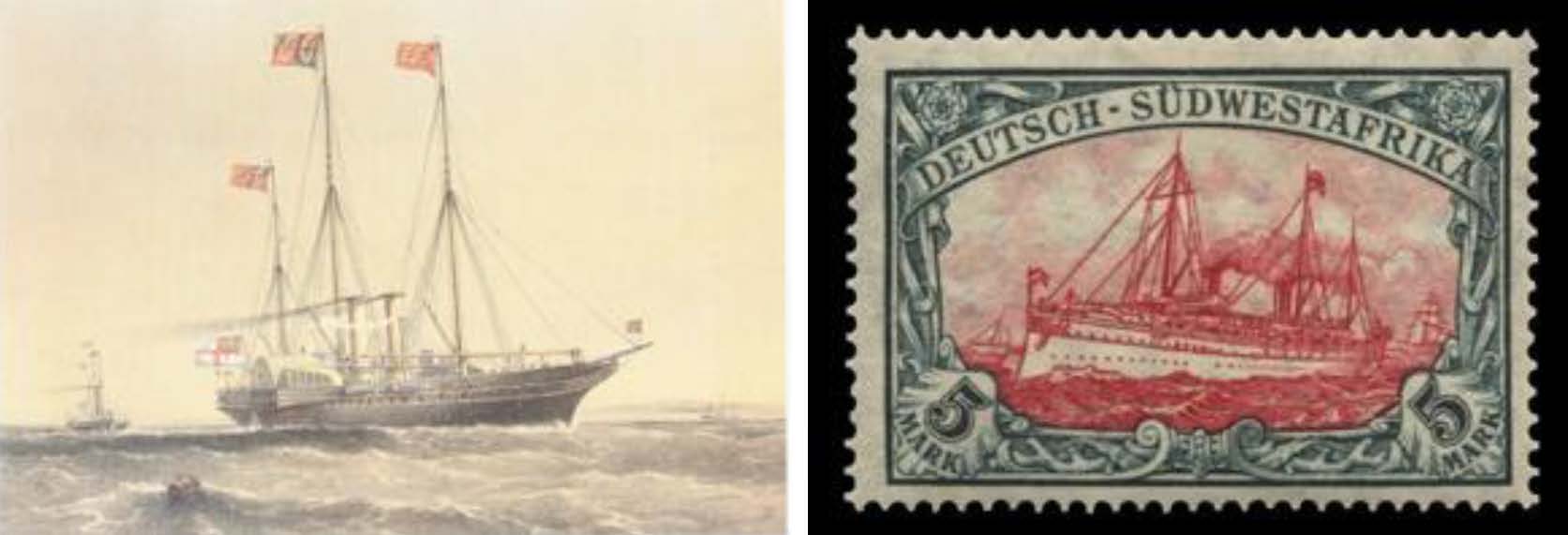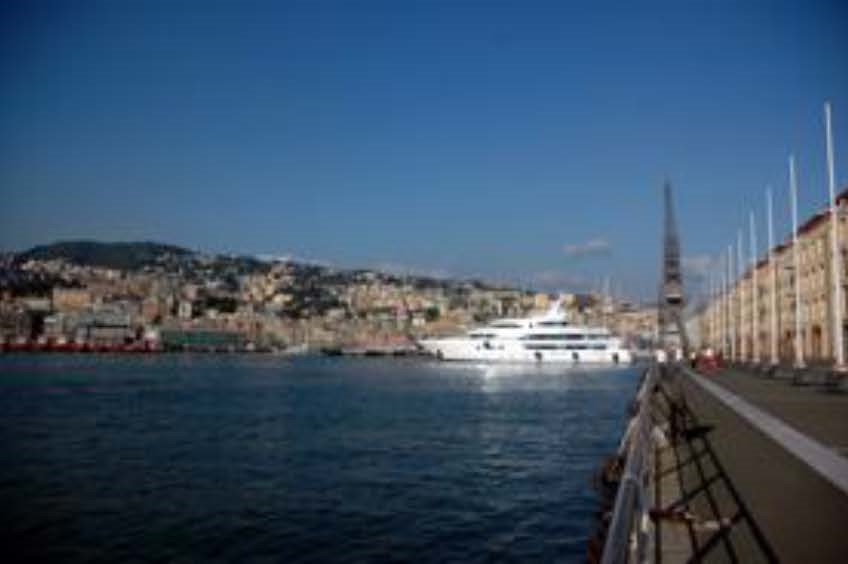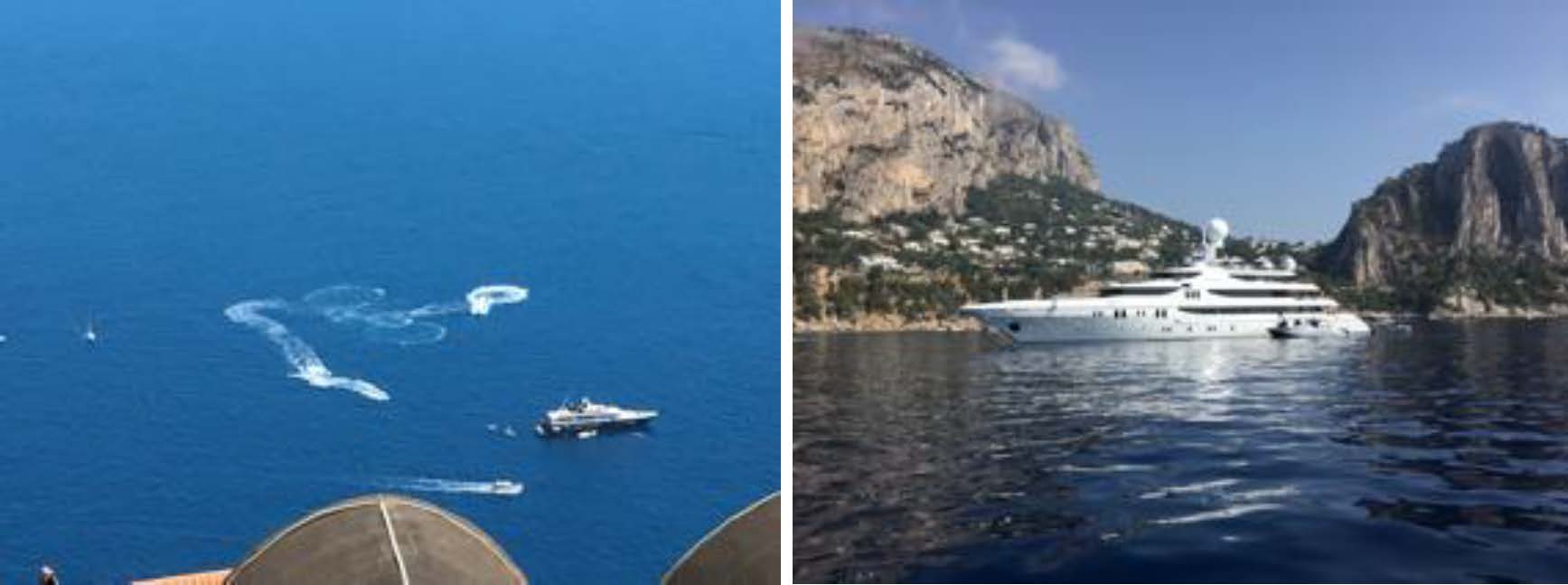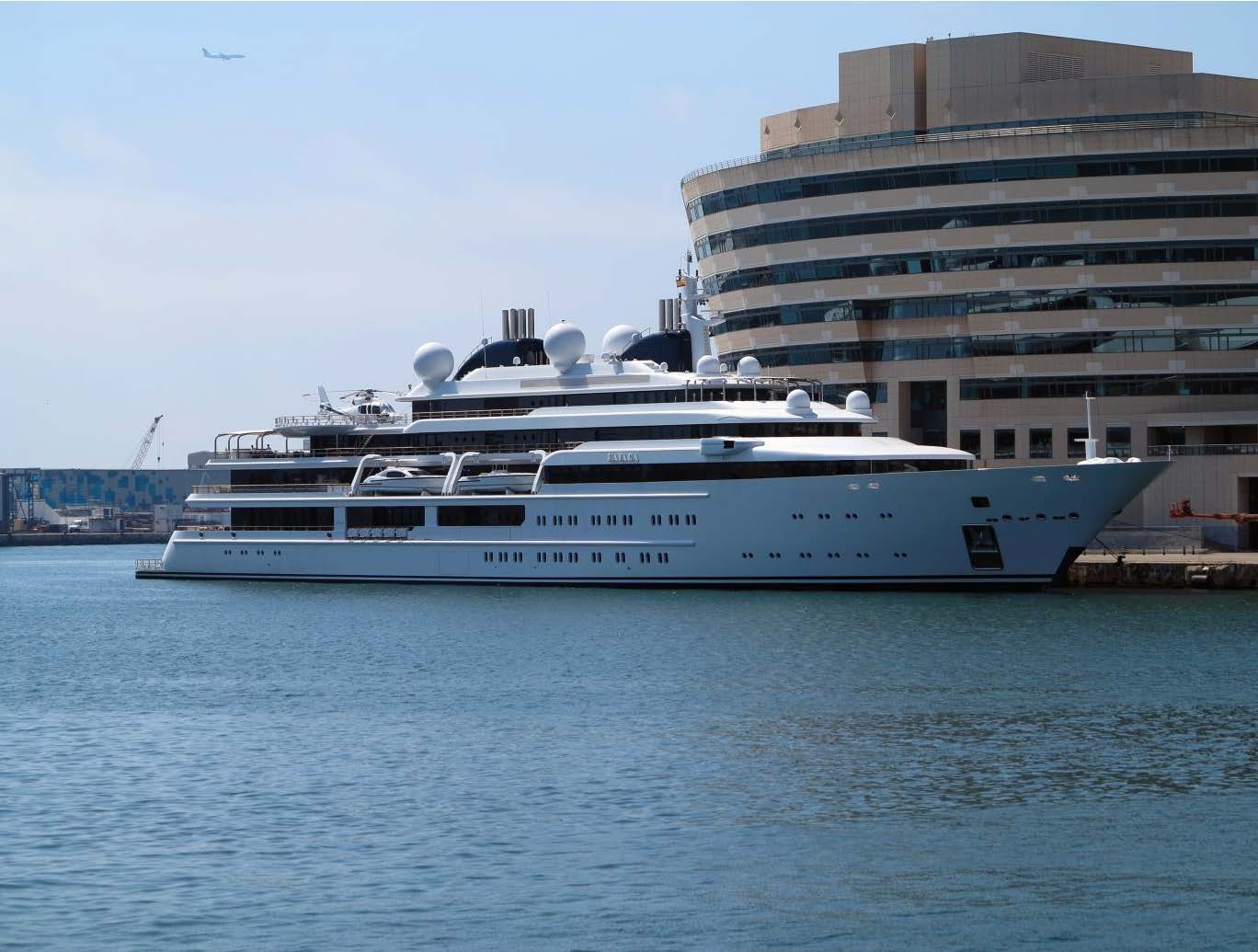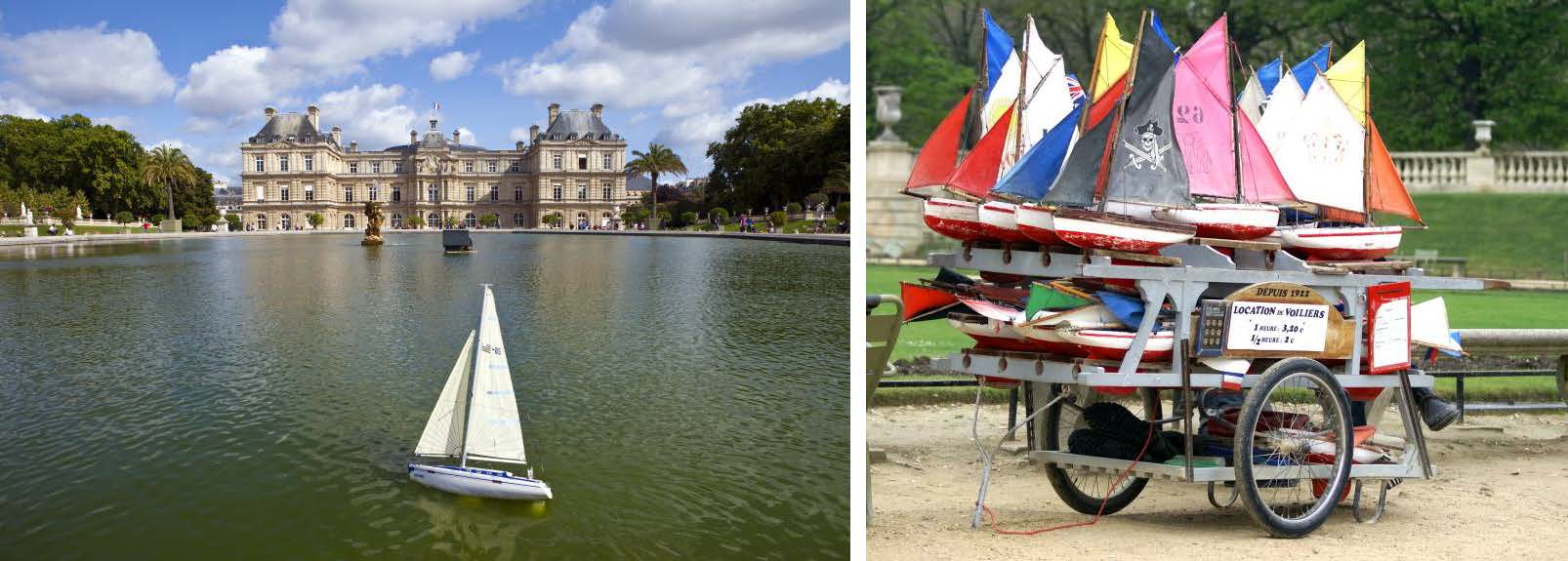Seascapes
In the summer, the Amalfi Coast offers gorgeous views of dangerously steep roads, narrow streets with sharp switchbacks, and ancient villages precariously hung on steep slopes looking over a gorgeous blue sea sprinkled with ferries, majestic cruise ships, and multi-million-dollar-yachts. During the day, the yachts draw shining white lines across the surface of the ocean; seen from smaller boats, ferries, or cruise ships, they are photo opportunities for people with less money.
Seascapes off the coasts of Amalfi and Capri. (Source: Carola Hein)
Illuminated at night, they form the backdrop for others’ romantic visions and attract their own admirers. Gone the next day, they are part of an ever-changing ocean. For their super-rich passengers, yachts are custom-built, exclusive temporary housing, mobile palaces that can take them to whatever ports and landscapes they choose. As reclusive luxury spaces, they allow for private conversations. They are on the one hand a sign of human freedom for privileged migrants that can no longer be found on land and that can only be bought with a lot of money. On the other, they are indicators of a growing expansion of human activity in and on the ocean, some of it moving and some of it fixed.
Royal yachts, such as the Victoria and Albert II and the Hohenzollern, used respectively by the sovereign of the United Kingdom and the German Emperor Wilhelm II, are predecessors to today’s luxury yachts. (Source: https://commons.wikimedia.org/wiki/File:HMY_Victoria_and_Albert_II_1855_William_Frederick_Mitchell.jpg, https://upload.wikimedia.org/wikipedia/commons/8/83/D-S%C3%BCdwestafrika_1906_32_A.jpg)
The ocean has been a retreat from the public for the wealthy for many centuries, and yachts have a long history as a means for them to travel in style and gain access to remote areas. Villa Pipiano and Villa Pollio Fellice, Roman villas on the Sorrentine coast reachable only by sea, are examples of aristocratic residences for seasonal migrants. Royals have long had their own lavishly equipped yachts, useful for state visits or diplomatic encounters with other leaders and offering luxurious privacy at other times as well. The German Emperor Wilhelm II’s yacht, the Hohenzollern, was commemorated on a stamp. Yachts can whisk their privileged passengers across the waters to whole private islands, including the World islands near Dubai. Guarded by water, these places guarantee lifestyles free of paparazzi or other observers.
[one_half_last]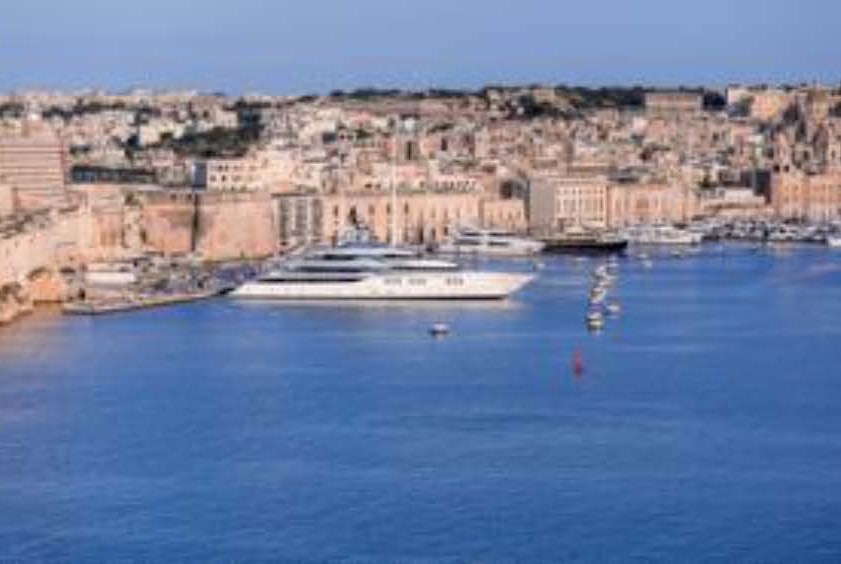 [/one_half_last]
[/one_half_last]
Service landscapes and yacht ports
Land-side viewers might appreciate the beauty of the yachts, but what are the benefits of these yachts for the places they visit? Does the land itself even matter for these ships? Do restaurant visits, sightseeing, and shopping on shore provide gains to local ports?
Yachts can stay multiple days at sea and their users can opt where to touch land occasionally to visit, refuel, and restock. Living on a yacht can serve as a tax haven for people who stay less than two weeks in each country. These yachts and their super-rich owners thus offer little to landside places that serve purely as backgrounds for ocean-based activities. The selections of where to disembark depends on multiple factors, from the attractiveness of the port city to the price of the berths in harbor. Marinas that host the expensive ships serve as entryways to these intermittent landsite visits and potential spending. Exclusive vacation spots usually have a limited number of berths, and even powerful people might not find room for their yachts. Exclusive marinas such as Marina Grande on the island of Capri can accommodate some 300 yachts, but Marina di Portofino, an exclusive port accessible only by private road and by boat, only hosts 14 [1]. Other leading marinas in Caribbean include Yacht Haven Grande, St Thomas, US Virgin Islands, or Port de Gustavio, an exclusive marina. Lack of space is also a key sign of fashion at Asian marinas, where the rapidly growing number of multi-millionaires who own yachts may find themselves excluded. Singapore’s ONE15 Marina Club, where monthly berth rentals cost S$10,000 ($8,000) for a 40-meter boat, is currently fully booked.
Yachts on the Amalfi coast. (Source: Carola Hein)
The cities where these ships moor -whether temporarily, while traveling, or for the long term, when at home- are probably the main beneficiaries of their spending, and cities that host the yacht industry may benefit most. Barcelona is one of them, and the Barcelona Clúster Nàutic stands as example of the riches that yachts bring. This organization, established in October of 2013 by a number of institutional partners, including the City government, the Port authority, and the Universitat Politècnica de Catalunya (UPC), aims to develop water sports as an economic driver for the city. Barcelona already hosts many yacht businesses: construction, management, repair [2]. The city has developed the marina, originally built for the 1992 Olympics, into One Ocean Port Vell, an exclusive facility for some 148 yachts. Travelers can also easily reach it from land and air as well as water, as it is located in the center of the city and near a major airport, and has a heliport serving private helicopters. The historic city is at its doorstep, with cultural attractions (including the Gothic quarter and Las Ramblas), shopping, leisure, and Barceloneta Beach and other beautiful beaches. The marina itself caters to the many desires and needs of its exclusive clientele: electric golf cart transportation as well as the heliport, wellness and spa services, storage, a private members club, a business center, and so on [3]. Toni Tio, President of the Barcelona Clúster Nàutic explained at the conference of the Association International Ville Port (AIVP) meeting in Le Havre in 2017 that the yacht industry has become an important aspect of Barcelona’s City Port development [4].
Super yacht in the port of Barcelona. (July 11th, 2016ID 74905196 © Romica | Dreamstime.com)
The limits of the unlimited oceans
While new marinas are built to provide more berths for the super-rich in select ports to facilitate their leisurely migration, the yachts may soon outrun the places they visit: there are fewer and fewer areas that are attractive, exclusive, and unpolluted. The ocean is no longer a pristine waterscape or an unknown and challenging territory. Multiple interests are vying for the open water. Floats carrying migrants seeking refuge cross the paths of the superyachts carrying the super-rich seeking privacy and luxury. The oil industry has built offshore drilling platforms in its search for raw materials complementing the extensive travel patterns of the oil tankers; alternate energy companies have developed off-shore wind parks. The increasing use of and construction on and in the oceans is the subject of ongoing research by Carola Hein and Nancy Couling [5]. Meanwhile, for most of us, places like the Jardin du Luxembourg in Paris, where kids can float their play ships, are the best we can dream of in terms of yachts and escape.
Kids sailing boat in the Jardin du Luxembourg in Paris. (Source: August 16th, 2013, ID 35654207 © Tetyanaustenko | Dreamstime.com; ID 18962761 © Freephoton | Dreamstime.com)
Notes
[1] Tim Thomas, “Where Billionaires Choose To Dock: The World’s Most Expensive Arenas” Forbes 27.3.2013
https://www.forbes.com/sites/timthomas/2013/03/27/where-roman-abramovich-david-geffen-and-lakshmi-mittal-choose-to-dock-the-worlds-most-expensive-marinas/#4294fbcf38dd; Nathan Bees, “Top 15 elite superyacht marinas worldwide” Yachting Pages 20.12.2017 (updated) https://www.yachting-pages.com/content/top-15-elite-superyacht-marinas-worldwide.html
[2] “Ports/Marinas, Superyacht port and marina guides” https://results.yachting-pages.com/nav/type/portmarina/0 (last accessed 29.3.2018)
[3] One Ocean Port Vell, https://www.oneoceanportvell.com/
[4] The Barcelona Nautical Cluster, a tool for the economic Ciy Port animation
Toni Tio, Presidente, Barcelona Clúster Náutico, España
[5] Hein, Carola ‘Oil Spaces: The Global Petroleumscape in the Rotterdam/The Hague area’ Journal of Urban History (2018); Nancy Couling, ‘Urbanization of the Ocean; Extractive Geometries in the Barents Sea’, in Infrastructure Space, LaFargeHolcim Forum for Sustainable Construction (Berlin: Ruby Press, 2016).
Head Image: Seascapes off the coasts of Amalfi and Capri. (Source: Carola Hein)
